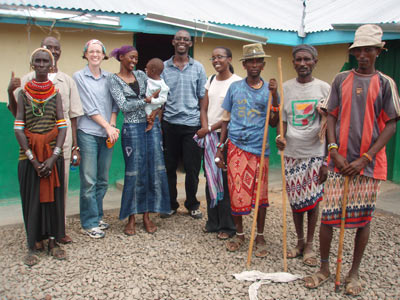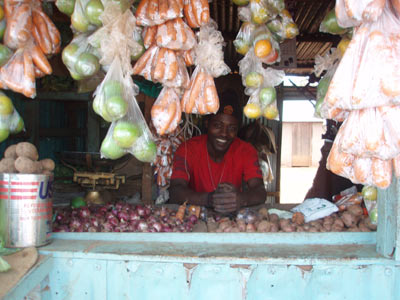Researchers develop food aid decision-making tool
By Stacey Shackford



Shipping food to foreign countries may not always be the best response to food crises; sometimes sending cash or procuring goods locally is cheaper, faster and more effective.
Cornell researchers have developed a tool to help international relief organizations cater their food aid response to specific situations, within local and regional economic and social contexts.
Historically, agencies have typically sent food across the ocean in response to crises. But the 2004 Indian Ocean tsunami made policymakers rethink disaster relief strategies, said researchers at Cornell's Charles H. Dyson School of Applied Economics and Management.
Despite the enormous loss of human life caused by the tsunami, food production and marketing systems beyond coastal areas remained largely intact, so the cash that flooded in from worldwide donors was able to be applied immediately and effectively.
As a result, interest in alternatives to food aid grew considerably, and the resulting increase in choices meant that agencies needed better tools to make good choices. Thus, the Market Information and Food Insecurity Response Analysis (MIFIRA) tool was developed by a team led by Christopher Barrett, the Stephen B. and Janice G. Ashley Professor of Applied Economics and Management, with support from CARE and U.S. Agency for International Development's (USAID) Food for Peace.
First proposed in 2009 in the journal Food Security, it has been used in Bangladesh, Malawi, Ethiopia, Kenya and Afghanistan, by such agencies such as the United Nations Food and Agriculture Organization and USAID.
MIFIRA takes into account not only the impact of food security in affected communities, but also the way food aid responses could impact them further.
For example, giving money to a community instead of wheat could mean more people will seek to purchase rice. Could local vendors support this new demand? Would it result in increased prices, creating a whole new group of food-insecure people?
The MIFIRA process starts by asking one main question: Are local markets functioning well?
If the answer is yes, then cash transfers should be considered. A series of other questions follow, to further hone assistance strategy and assess the potential for negative impacts.
If the answer is no, another question is posed: Is there sufficient food available nearby to fill the gap?
"When local food markets function reasonably well and ample food is available and affordable, local private-sector traders can typically move food in more quickly, cheaply and reliably than can international agencies, which, in turn, can typically deliver cash more quickly and reliably than they can deliver food," Barrett said.
Such factors as security, specific nutritional objectives, gender dynamics, implementing agency capacity and timeliness should also be considered, he said.
Not all agencies have choices when it comes to responding to food crises. Only recently, through the 2008 Farm Bill, did the United States allow for small amounts of local and regional procurement of food aid in developing countries; USAID's Emergency Food Security Program allowed for cash-based food assistance in 2010.
Since other agencies don't have the time or expertise to implement MIFIRA fully, Erin Lentz, research support specialist in the Dyson School, is helping to hone the process and develop training materials.
"Our hope is that operational agencies can field test, critique and update this framework over time, so as to refine it into a flexible, reliable, broadly applicable instrument to help anticipate and respond to food insecurity crises in the most appropriate manner possible," she said.
Stacey Shackford is a staff writer at the College of Agriculture and Life Sciences.
Media Contact
Get Cornell news delivered right to your inbox.
Subscribe